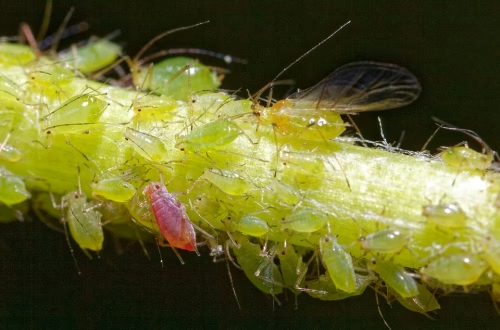Summary:
Silverfish pest control is essential for protecting homes and businesses from these destructive, moisture-loving insects. Silverfish can damage books, clothing, and wallpaper, and their presence often indicates underlying moisture issues. Effective control methods include moisture reduction, sealing entry points, and targeted treatments. Homeowners, renters, and property managers should act promptly to prevent infestations, as silverfish can multiply quickly and cause significant property damage. Understanding the risks and implementing proactive measures can save time, money, and stress in the long run.
What This Means for You:
- Silverfish infestations can lead to costly damage to personal belongings and property.
- Address moisture issues in your home to reduce the risk of silverfish infestations.
- Seal cracks and crevices to prevent silverfish from entering your living spaces.
- Regular inspections and early intervention are key to preventing widespread infestations.
original_title:
Silverfish Pest Control: A Comprehensive Guide to Protecting Your Home
”Silverfish Pest Control” Explained:
Silverfish pest control involves managing and eliminating silverfish, small, wingless insects that thrive in damp, dark environments. These pests are known for their silvery scales and fish-like movements, and they feed on carbohydrates, including paper, glue, and fabrics. Silverfish infestations are often a sign of excess moisture in a home or building, making moisture control a critical component of effective pest management. Professional pest control services use a combination of environmental modifications, chemical treatments, and preventive measures to eradicate silverfish and prevent future infestations.
Silverfish are nocturnal and can be difficult to detect until their population grows. They are not harmful to humans but can cause significant damage to personal belongings, such as books, clothing, and wallpaper. Effective silverfish control requires a thorough understanding of their behavior and habitat preferences, as well as a proactive approach to addressing the conditions that attract them.
Types of Pest Issues:
Silverfish are classified as nuisance pests, but their presence can lead to more serious problems if left unchecked. They are often found in bathrooms, basements, and kitchens, where moisture levels are high. In addition to damaging personal items, silverfish can also contaminate food sources, making them a concern for homeowners and businesses alike. State and federal pest control laws emphasize the importance of maintaining safe and sanitary living conditions, which includes addressing silverfish infestations promptly.
In some cases, silverfish infestations may indicate larger structural issues, such as leaks or poor ventilation. These conditions can also attract other pests, such as mold and mildew, creating a compounded problem. Property owners should be aware of local regulations regarding pest control and take steps to comply with health and safety standards. Ignoring silverfish infestations can result in costly repairs and potential health risks, making early intervention essential.
Common Pest Control Methods:
Effective silverfish control begins with reducing moisture levels in the affected area. This can be achieved by using dehumidifiers, fixing leaks, and improving ventilation. Sealing cracks and crevices in walls, floors, and foundations can also prevent silverfish from entering the home. In cases of severe infestations, professional pest control services may use insecticides or baits specifically designed to target silverfish.
Preventive measures, such as storing food in airtight containers and regularly cleaning storage areas, can also help deter silverfish. Homeowners should inspect their property regularly for signs of silverfish, such as shed skins or small holes in paper products. Combining these strategies with professional pest control services can provide long-term protection against silverfish infestations.
Risks and Consequences:
Ignoring a silverfish infestation can lead to significant property damage, as these pests feed on a wide range of materials, including books, clothing, and wallpaper. Over time, this can result in costly repairs and replacements. Additionally, silverfish infestations can indicate underlying moisture problems, which can lead to mold growth and structural damage if not addressed.
Silverfish are not known to transmit diseases, but their presence can be unsettling and may cause stress for homeowners. In commercial settings, silverfish infestations can harm a business’s reputation and lead to financial losses. Taking proactive steps to control silverfish can prevent these consequences and ensure a safe, comfortable living or working environment.
Choosing a Pest Control Service:
When selecting a pest control service for silverfish, it is important to choose a company with experience in dealing with these specific pests. Look for licensed and certified professionals who use safe, effective methods to eliminate silverfish. A reputable pest control service will conduct a thorough inspection of your property, identify the source of the infestation, and develop a customized treatment plan.
Ask about the company’s approach to moisture control and preventive measures, as these are critical components of silverfish pest control. Reading reviews and asking for recommendations can also help you find a reliable service provider. Investing in professional pest control can save you time and money in the long run by addressing the root cause of the infestation and preventing future problems.
People Also Ask About:
- What attracts silverfish to my home?
Silverfish are attracted to damp, dark environments and feed on materials like paper, glue, and fabrics. Excess moisture and poor ventilation are common factors that draw them indoors.
- Are silverfish harmful to humans?
Silverfish are not harmful to humans and do not transmit diseases, but they can cause significant damage to personal belongings and property.
- How can I prevent silverfish infestations?
Reduce moisture levels, seal entry points, and store food in airtight containers. Regular cleaning and inspections can also help prevent infestations.
- Can I get rid of silverfish on my own?
While DIY methods like dehumidifiers and traps can help, severe infestations often require professional pest control services for complete eradication.
- How do I know if I have a silverfish infestation?
Signs of an infestation include shed skins, small holes in paper products, and sightings of the insects themselves, especially in damp areas.
Expert Opinion:
Silverfish infestations are often a symptom of larger moisture issues in a home or building. Addressing these underlying problems is key to effective pest control. Homeowners should prioritize regular inspections and preventive measures to avoid costly damage. Professional pest control services offer the expertise and tools needed to eliminate silverfish and protect your property. Taking action early can prevent infestations from becoming unmanageable.
Related Key Terms:
- Silverfish pest control near me
- How to get rid of silverfish in the bathroom
- Best silverfish repellent for homes
- Professional silverfish extermination services
- Silverfish prevention tips for homeowners
- Signs of silverfish infestation in basements
- Moisture control for silverfish prevention
Pest Control Disclaimer
This content is for educational purposes only and does not replace professional pest inspection, treatment, or safety advice. Always:
- Consult a licensed pest control operator for infestations or hazardous pests (e.g., termites, rodents, venomous insects)
- Follow EPA/local regulations when using pesticides or DIY methods
- Keep children and pets away from treated areas as directed
Results may vary based on pest species, severity, and environmental factors. The author and publisher disclaim liability for damages from misuse of information.
*Featured image sourced by Pixabay.com




